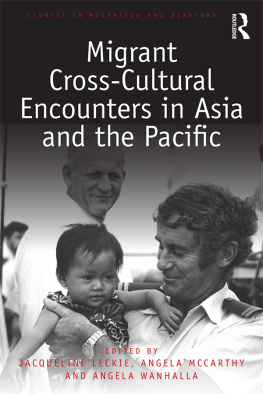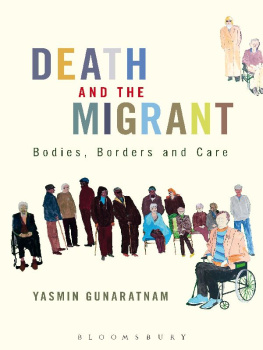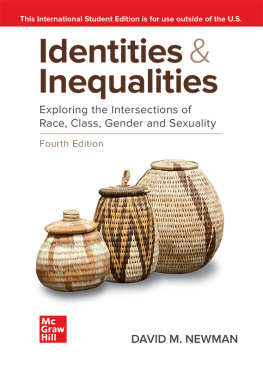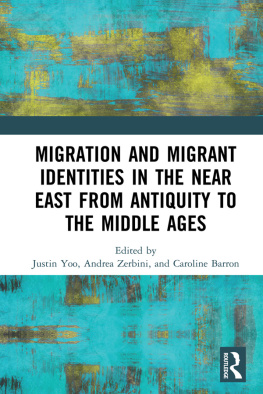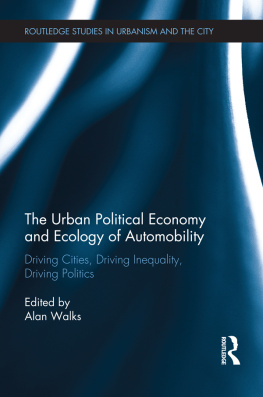This book is about the local everyday life of migrant professionals. It analyzes the relevance of locality for a mobile group and considers the relevance of migrant social identities for local encounters in socially unequal cities. By doing so this book aims to provide a new perspective on migrant professionals by analyzing their local practices in specific cities and by introducing the relevance of locality for everyday practices, encounters and for identities of those too often conceptualized as a placeless elite. By grounding their everyday practices in specific cities, social and spatial inequalities within the cities become evident. This is because the different groups of migrant professionals within this book are considered as having specific identities, such as class, ethnicity and gender, that are relevant for the kind of encounters with others and other spaces within the cities.
The Rise of Mobility and the Migration of Professionals
The migration of qualified professionals is not a completely new phenomenon, and people such as scientists traveling between universities, highly qualified refugees fleeing from one country to another, white imperial colonizers, adventurers (Phillips 1997) or development workers come to mind. Qualified managers and engineers were actors in exploitation processes during the age of imperialism (King 1990) and in the later manufacturing work outsourced from industrial societies to developing countries in a new international division of labor since the 1970s (Frbel, Heinrichs and Kreye 1980).
Today migrant professionals have transformed toward becoming a more diverse group with regard to gender, ethnicity, education, country of origin and migration destination. In general the migration of highly skilled professionals has sharply risen in the last few decades. A recent report found that in the last decade the number of tertiary educated immigrants in the Organisation for Economic Co-operation and Development (OECD) rose by 70% to 27.3 million. In 20102011 about 30% of all migrants in the OECD were highly educated (OECD-United Nations Department of Economic and Social Affairs [UNDESA] 2013).
The main reasons for the migration of professionals today were identified as follows: First, intensified globalization processes and border-crossing flows; second, a general increase in formal qualifications; third, social and economic transformations in some regions due to crises; and, fourth, todays consideration of migration as a necessary qualification and as a resource for a further career.
First, today the migration of professionals is widely seen as a paradigmatic representation and a driver of globalization. The global elite of highly qualified migrantsmanagers or scientists for exampleare mainly defined by their mobility as being super-mobile (Elliott and Urry 2010; Birtchnell and Caletro 2014).With their extraordinary mobility they are examples par excellence of members of todays societies, which are considered to have developed into mobile societies (Urry 2000, 2007) because of the development of communication, transport and travel technology in an era of flexible accumulation (Harvey 1989). David Harvey (1989) demonstrated that such time-space compression is accompanied by new forms of organization and production, such as just-in-time delivery and a reduction in the turnover time of capital. The rising spatial border-crossing spaces of flows (Castells 1996) of capital, commodities or information are also accompanied by migration of those working as highly qualified professionals in institutions such as political organizations, universities or research centers; transnational companies; and financial institutions. Hereby this group might take responsibility for the organization of economic activities away from the headquarters of transnational companies and might be involved in training local staff.
The migration of professionals is not a one way from more to less developed regions. Saskia Sassen (1988) demonstrated that migration toward the United States often follows financial investments or military activities of the United States in other countries. Established networks of goods, information and capital between regions create networks for migration between the regions. The so-established transnational migration networks span different spatial settings and national states. While frequently moving or communicating between the localities migrants are conducting their lives in different regions and countries. This is discussed as new transnational spaces and as networks that span global cities (Sassen 2001) or world cities (Taylor 2004) by crossing spatial and national borders. These new types of cities are seen as the new global centers or knots in these global networks. This is mainly because the offices and headquarters of the main corporate networks are based in those cities, and global control functions are concentrated there. It was demonstrated that with an intensified space of flows, on one hand, and with the rise of importance of some urban centers, on the other, the migration of professionals particularly between, but also, in general, toward, these urban centers has risen as well (Friedmann 1995; Beaverstock 2012).
Second, another reason for the increase of migration of professionals can be found in a general increase in tertiary education levels in many countries. Thus, if, in general, the level of formal education rises in a society, it is no surprise that the level of formal education also increases for the segment of society that is migrating. This general trend toward more formal education is conceptualized on society level as a transformation to knowledge societies (Stehr 1994), in which knowledge considered useful knowledge for working in the tertiary sector of post-industrial societies is more valued (Bell 1974). On the level of new social groups with specific everyday practices, this is exemplified by a rise of consumption-orientated new middle classes (Fernandes 2006; Lange and Meier 2009) in former developing countries. However, it is a group of people more socially diverse than general classifications such as the new rich (Robison and Goodman 1996; Goodman 2008) imply. For instance, it was demonstrated that the consumption practices of a huge fraction of the new middle classes in Mumbai is mainly credit based (Nijman 2006). Such a credit-based rise of consumption practices, especially in housing, can be seen in many countries worldwide and is more than a symbol of the recent economic crisis.
This leads to a third reason for the recent increase in highly educated migrants. The economic crisis with a heavy rise of unemployment in many countries in southern and eastern Europe led to heavy job losses also for those employed or at least trained as tertiary-educated people and has led to a general rise in migration (OECD-UNDESA 2013). Social and economic transformations are spatially unequal and create new spatial settings with new possibilities for the employment of migrant professionals or, in the other case, spatial settings without the former employment possibilities. Even if a high formal education is the best insurance against unemployment and people with lower formal qualifications are affected much more by unemployment, the formally highly qualified are also not safe and may find better job and career possibilities in other countries. The impact of the recent economic crisis in those countries hit hardest is especially relevant for migrants, including some migrant professionals. Therefore, in some cases, a return migration might be an option for securing a better job or for general employment. A study on return migration in the enlarged European Union (EU) suggests that brain circulation between sending and receiving countries is a relevant phenomenon in the crisis because returned migrants are likely to migrate again with respect to the economic situation (Zaiceva and Zimmermann 2012).



